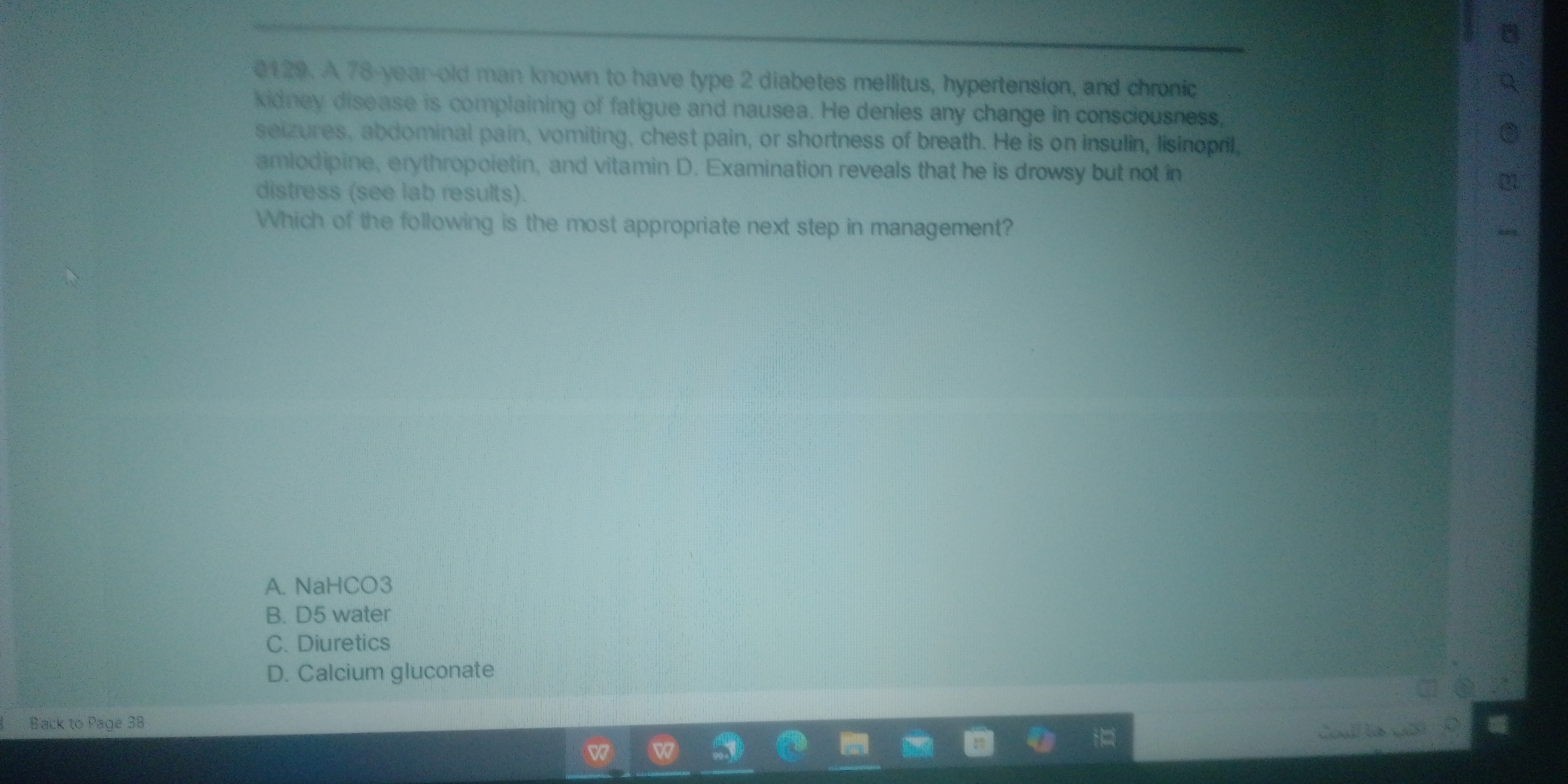A 78-year-old man known to have type 2 diabetes mellitus, hypertension, and chronic kidney disease is complaining of fatigue and nausea. He denies any change in consciousness, seiz... A 78-year-old man known to have type 2 diabetes mellitus, hypertension, and chronic kidney disease is complaining of fatigue and nausea. He denies any change in consciousness, seizures, abdominal pain, vomiting, chest pain, or shortness of breath. He is on insulin, lisinopril, amlodipine, erythropoietin, and vitamin D. Examination reveals that he is drowsy but not in distress (see lab results). Which of the following is the most appropriate next step in management? A. NaHCO3 B. D5 water C. Diuretics D. Calcium gluconate

Understand the Problem
The question presents a clinical scenario involving an elderly patient with multiple health conditions. The goal is to identify the most appropriate next step in managing the patient's symptoms and health status based on the given options.
Answer
Calcium gluconate
The most appropriate next step is Calcium gluconate.
Answer for screen readers
The most appropriate next step is Calcium gluconate.
More Information
In the context of chronic kidney disease and possible hyperkalemia (common with his medication profile and condition), calcium gluconate helps stabilize cardiac membranes.
Tips
A common mistake is not considering hyperkalemia in patients with kidney disease on certain medications.
Sources
- A 78-year-old man known to have type 2 diabetes mellitus... - quizgecko.com
AI-generated content may contain errors. Please verify critical information